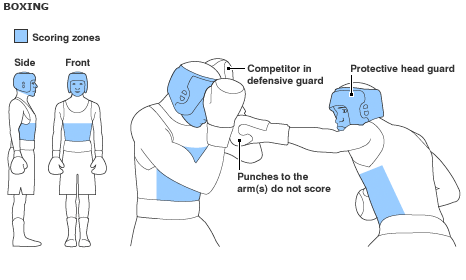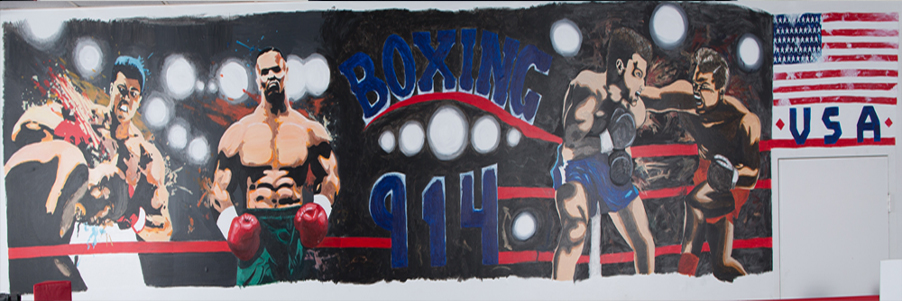Amateur boxing differs from ‘’regular boxing’’ in many ways. Sometimes called Olympic boxing, this type of boxing requires fighters to wear head gear (as well as gloves), and the scores are based on the number of blows that each fighter lands, rather than who is knocked out the fastest. The bouts are shorter than other types of boxing, with three, three-minute rounds in men’s Olympic boxing, and four two-minute rounds for women’s boxing.
While this type of boxing has its roots in typical boxing—that being the type of boxing that most people are used to watching, it has its own history of development.
The Early Years
Boxing, in any context, is nearly as old as civilization. The first record of a prizefight is in the Iliad, which was written in 1100 BC. It is believed, however, that Egyptians boxed as far back as 3000 BC and that early Ethiopians pursued as early as 6000BC. Theseus, King of Greece, was likely the first person to bring any kind of attention to the sport. While there was no set rules at the time, boxing was completely separate from the sport of wrestling. No rings existed—the ring was just the spectators who showed up to watch the match. The rules were simple: fight honorably.
Because there was no ring, it was impossible to corner a boxer like an opponent might be able to do today, and because the Greek Code of Honor dictated that a fighter should never back away from his opponent, it would have been difficult to pin an opponent into a corner. The fight was over when one boxer surrendered or knocked the sense out of the other.
It was included in the Olympics, some believe, as early as 688 BC. Because there were largely no rules and no weight classes, the strongest men usually prevailed. When the Olympics were expanded to include Romans, boxing was exported from Greece, where it was transformed and bastardized into the gladiatorial fights in the Coliseum.
In the 18th Century
During the Enlightenment, boxing saw a resurgence in popularity. While it still had few rules, (and how it was practiced varied largely from ring to ring), it was during this time period that it really found a foothold in society. Early matches in the Enlightenment period were likely very close to the matches that once took place in Greece and Rome. Amateur boxing as we know it today was not even really a glimmer in John Broughton’s eye.
John Broughton was one of the most popular and revered boxers of his time. He was the first to pen official rules for the sport and is considered to be the father of modern boxing. He encouraged fighters to wear gloves only during practice bouts, and bare-fisted fighting was still the accepted fighting style.
It wasn’t until the next century that boxing truly began to look like what it looks like today.
The Queensberry Rules
These rules outlined the size and shape of the boxing ring, as well as how long the rounds should be and how much downtime each fighter gets. While there were still plenty of fights going on that didn’t follow the Queensberry Rules, they ushered one of the best periods in boxing history and are the foundation for the rules used today.
Boxing in Modern Times
One of the main tenants of the Queensberry rules required all boxers to wear gloves. This was the first turn of events that turned boxing towards what we know today as Olympic boxing. Bareknuckle fighters were now required to wear gloves, which transformed how they stood and how they fought. The defined duration of the contests really changed how people thought of boxing—As a result, it became more of a sport. The Queensberry rules also outlined weight classes (though not nearly as many as there are today).
The first mention of “amateur boxing” came in the form of the Amateur Boxing Association, which was comprised of twelve separate clubs and held its own championship. By the turn of the 20th century, both Americans and British people were competing in the championship, which made it an international association.
At this time, amateur boxers only had to wear gloves, but they did compete in three rounds of three minutes each. It was only recently that the number of rounds increased by the total time decreased by doing four rounds of two minutes each. The rules during the Amateur Boxing Association may not have been exactly what are used today, but the gloves and the rounds definitely paved the way for amateur boxing.
Modern Amateur Boxing
The first time boxing found its way into the modern Olympics was in 1904. Hosted in Missouri, only American boxers competed in the event. With seven weight divisions and boxers that jumped weight classes to compete more than once, many boxers won more than one gold medal in boxing. There was also a woman’s event.
Boxing continued to be included in the Olympics, unless they were hosted in a country where boxing was illegal. There was still no headgear worn, but over the next hundred years, most of the advancements in amateur boxing had to do with the health and welfare of the competitors. Often, when one competitor was getting too violent, a referee would step in to stop the bout. The rules were changed so that in amateur or Olympic rings, points were awarded for landing hits, instead of knocking the other party out. Headgear was introduced to make it even safer for competitors.
Today’s amateur boxers have an astoundingly low injury rate, due to the protective gear worn and regulations that keep the sport from becoming too violent or aggressive.






